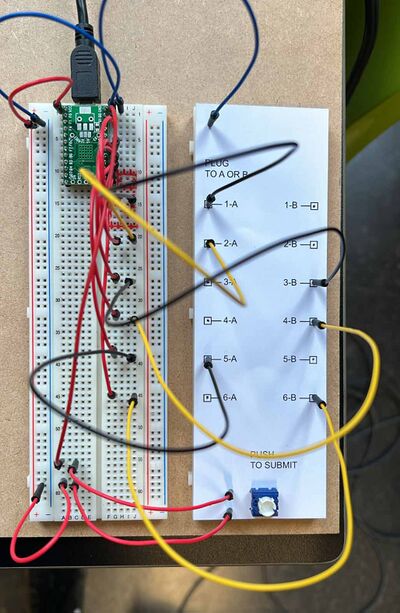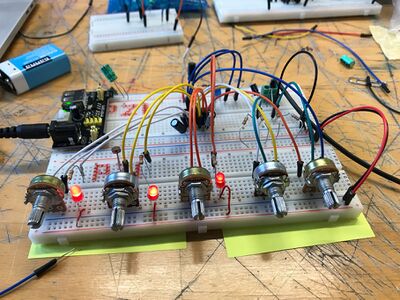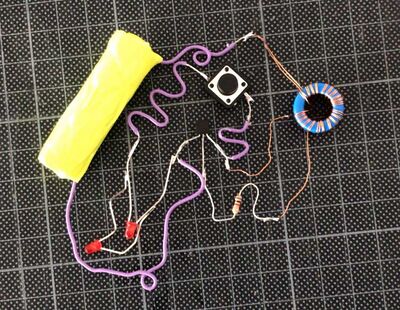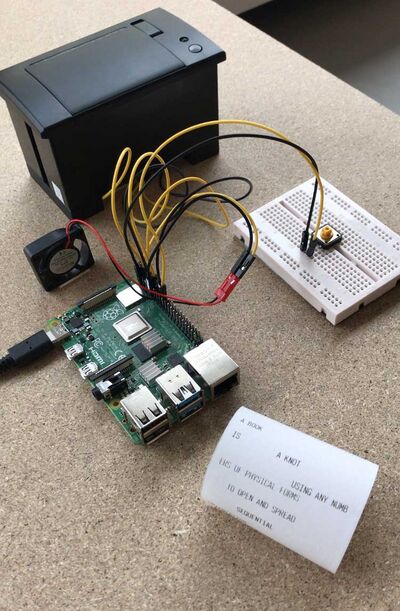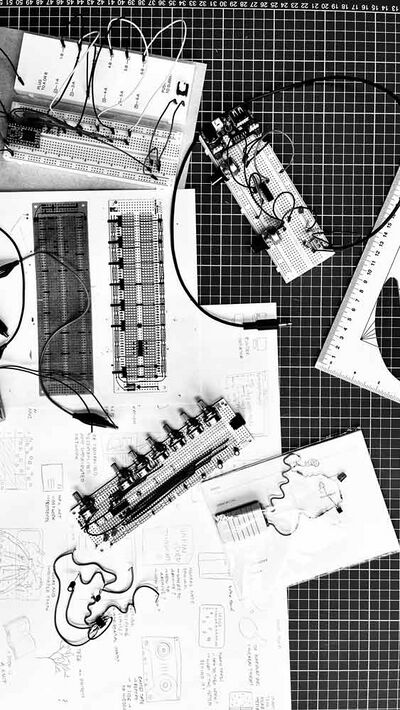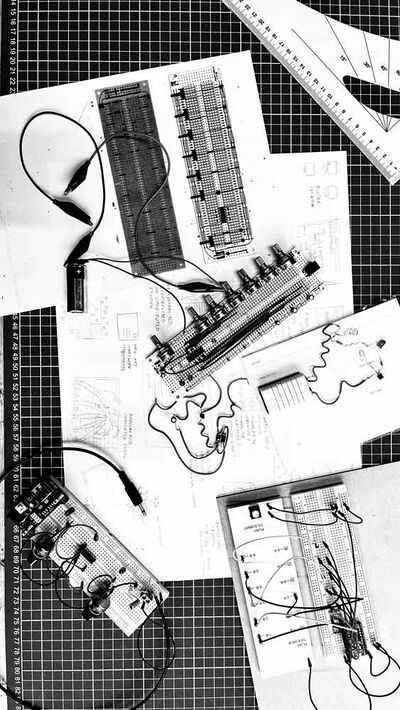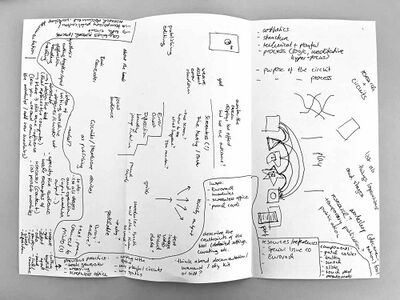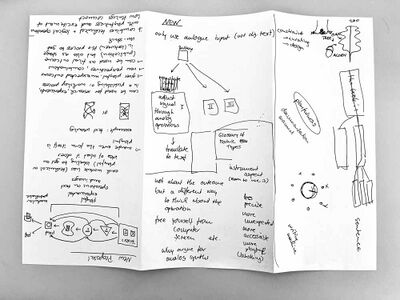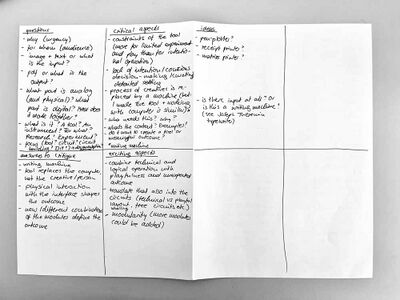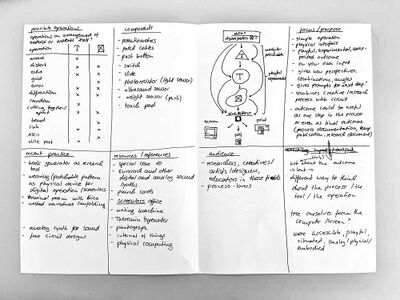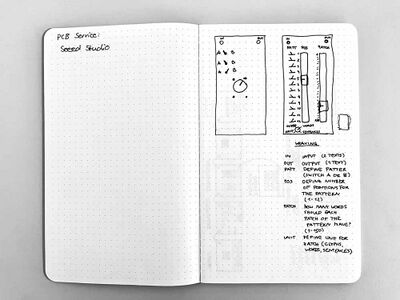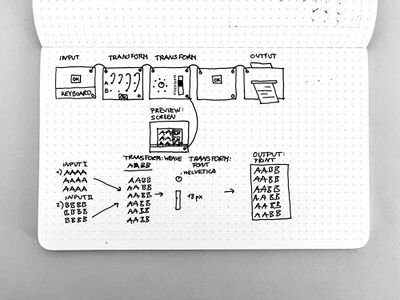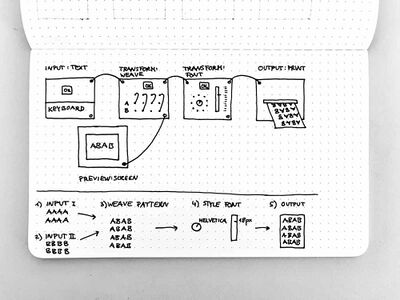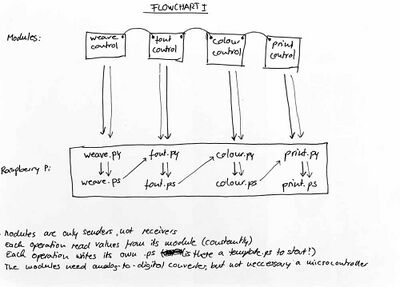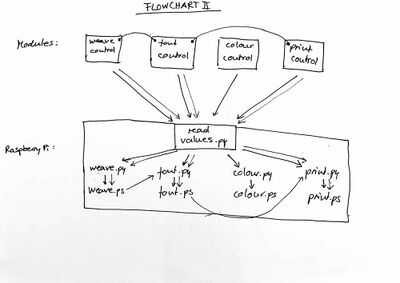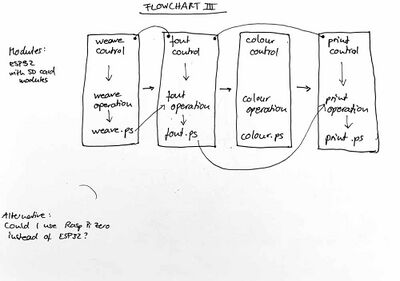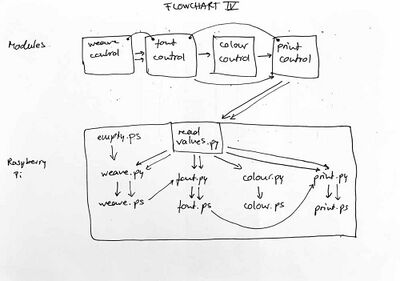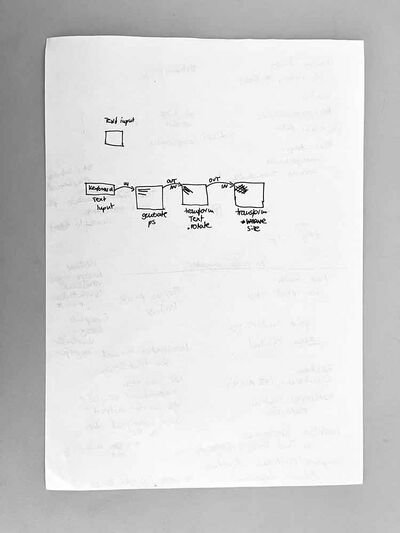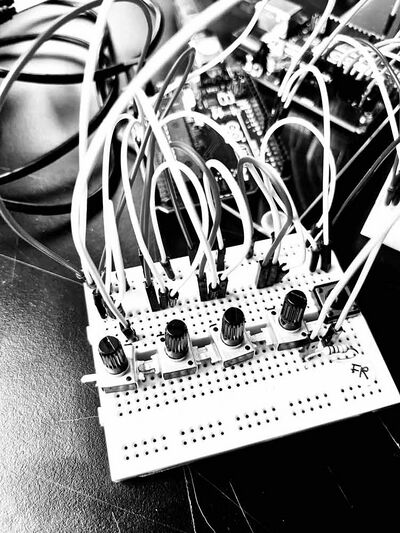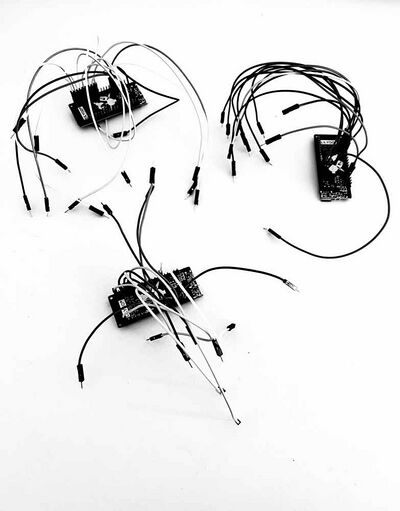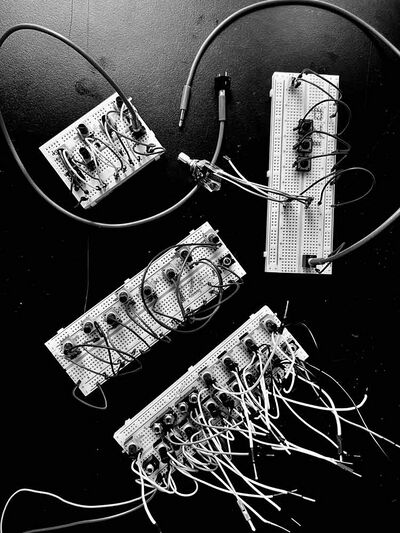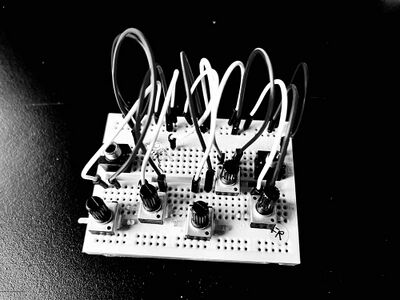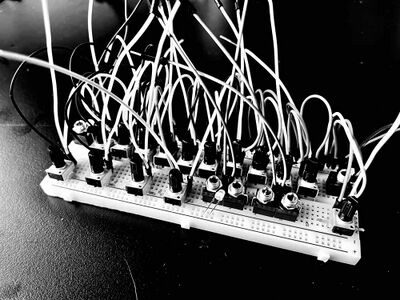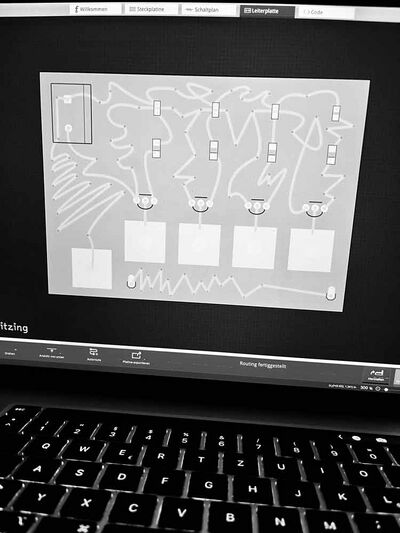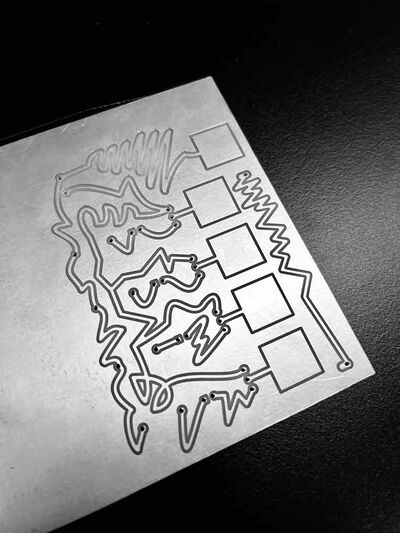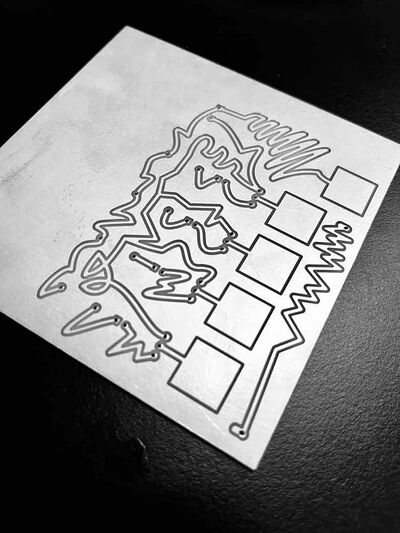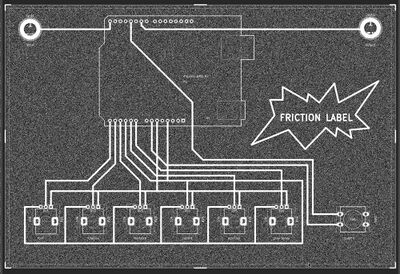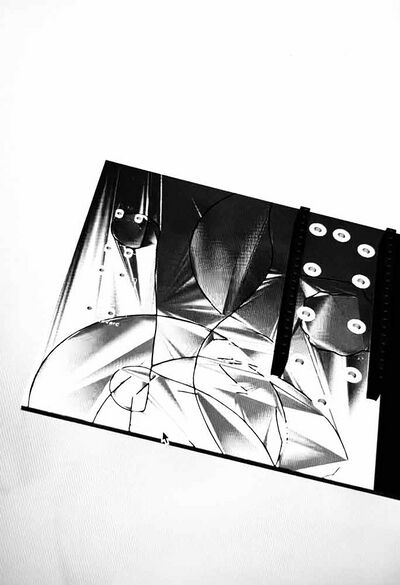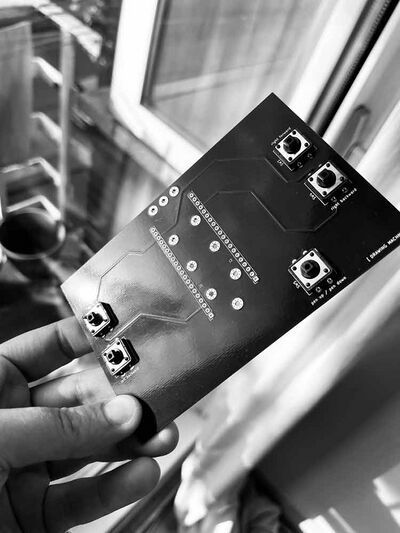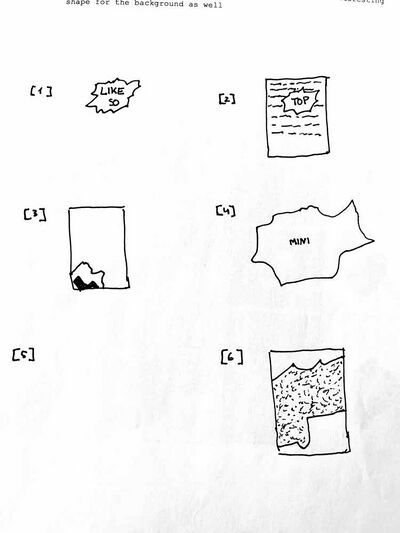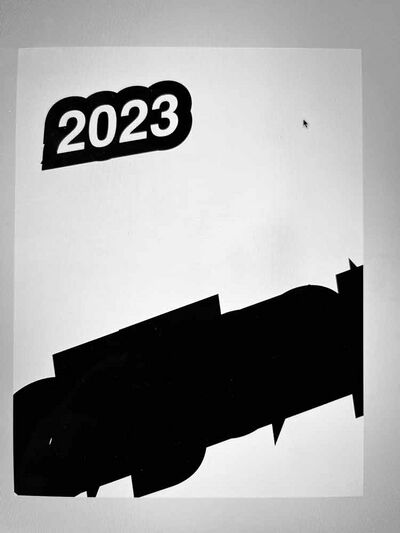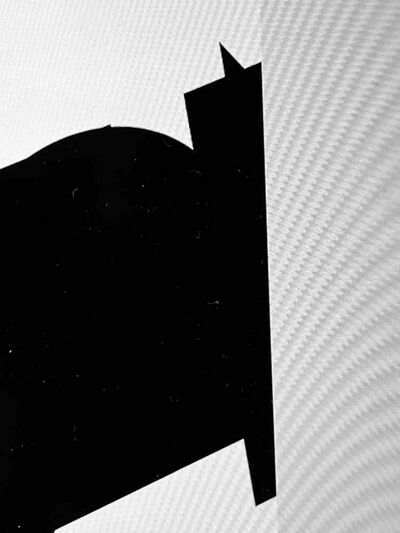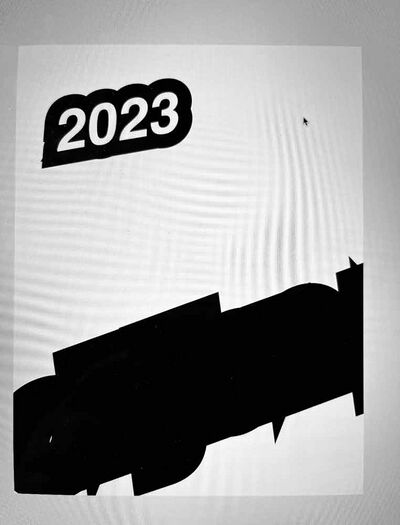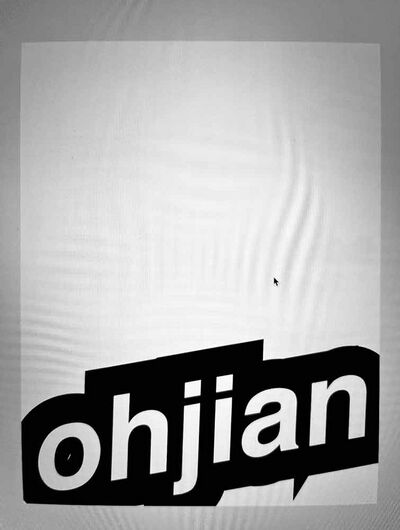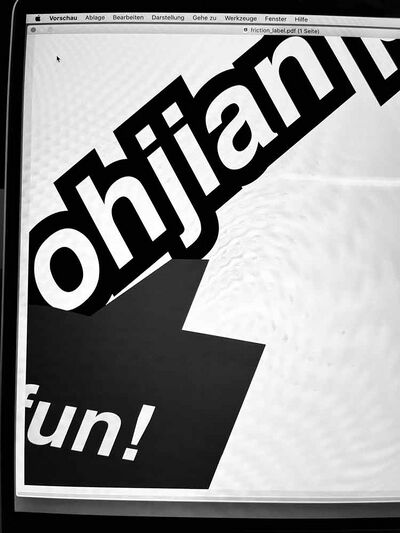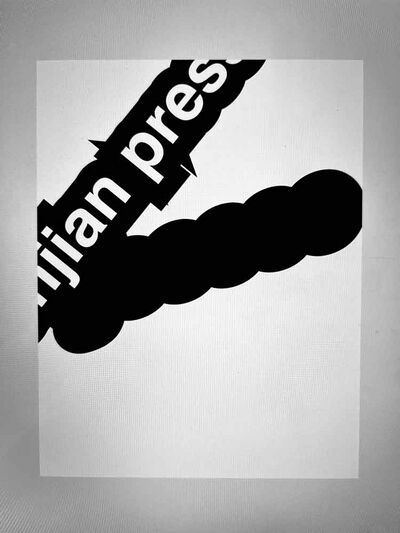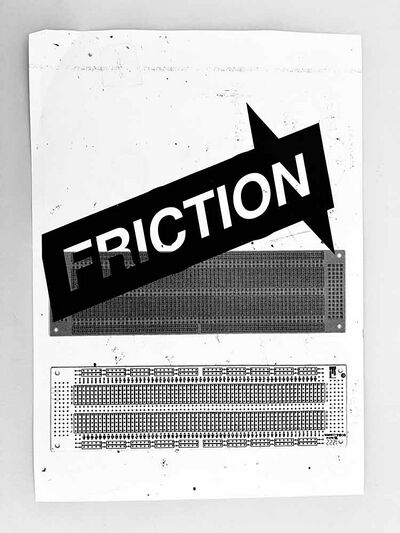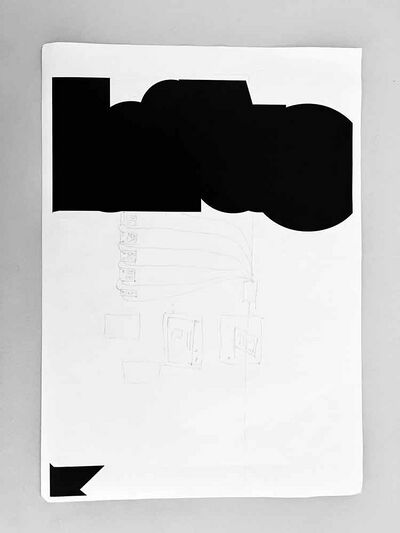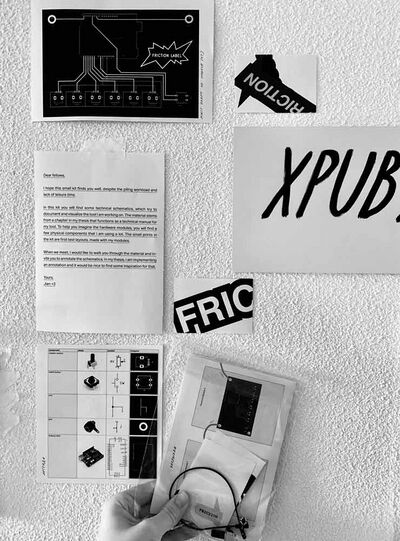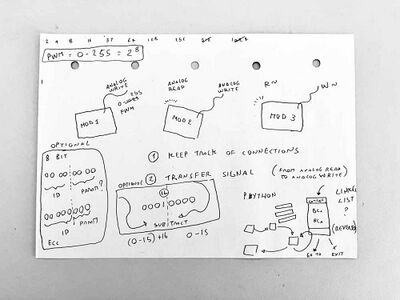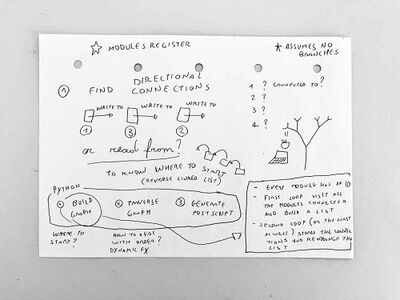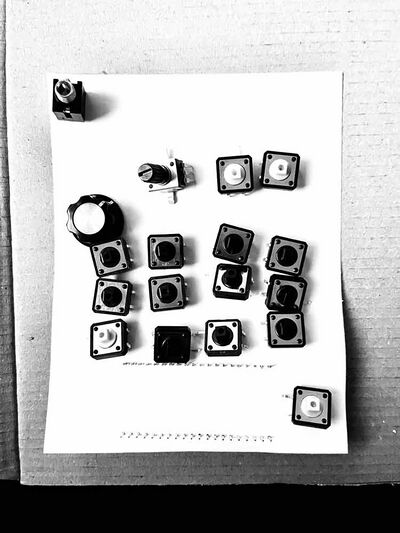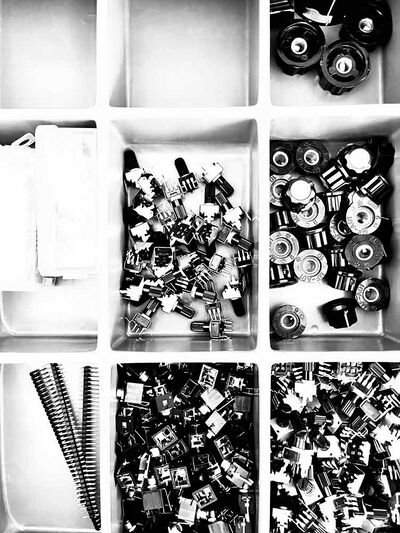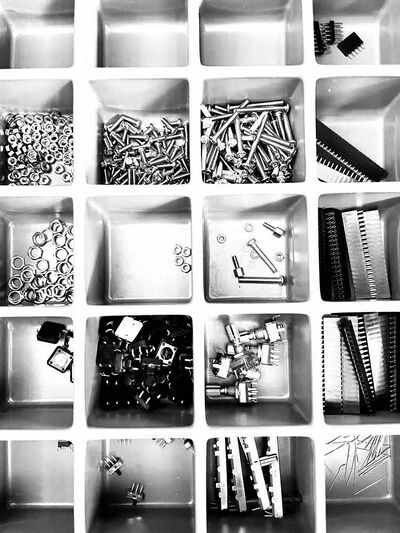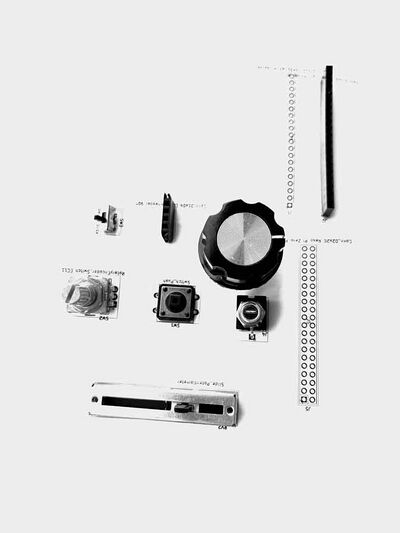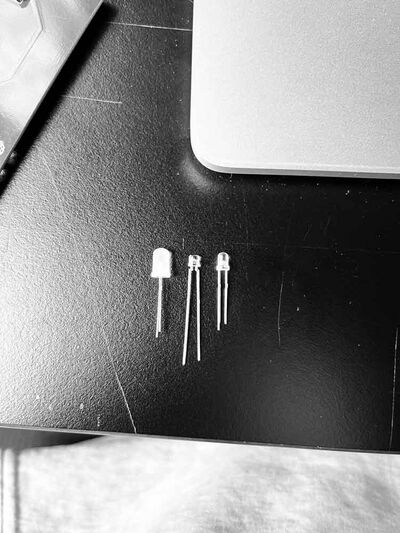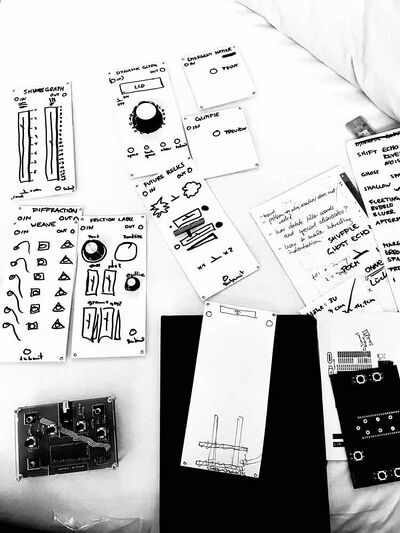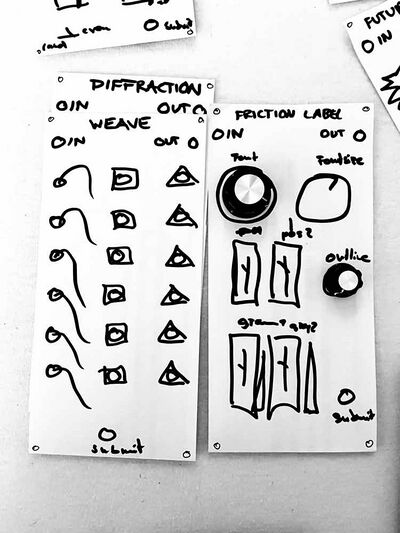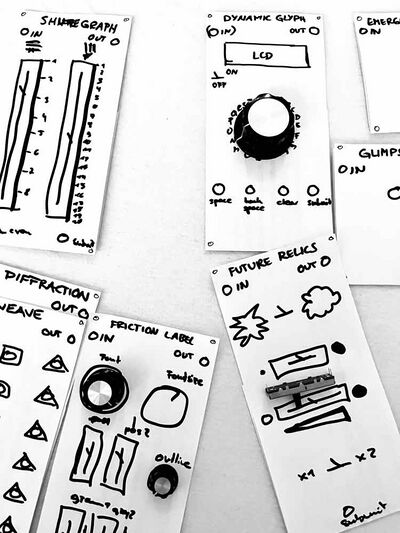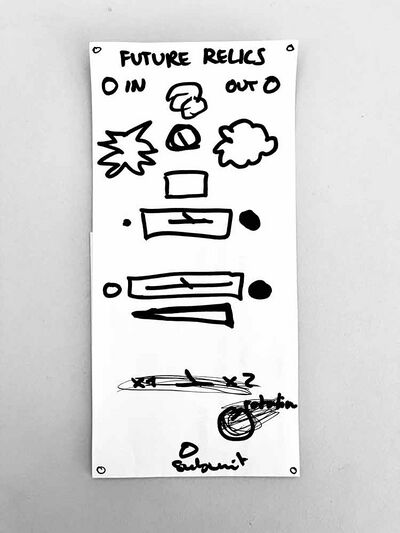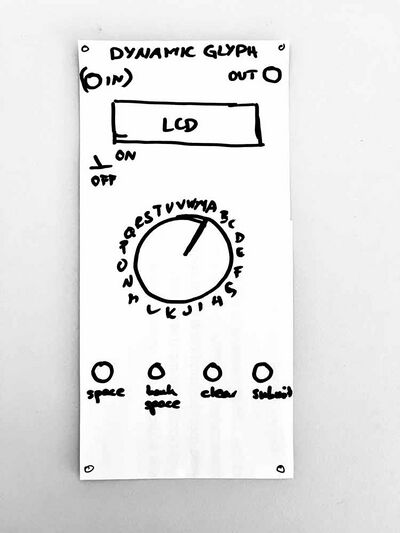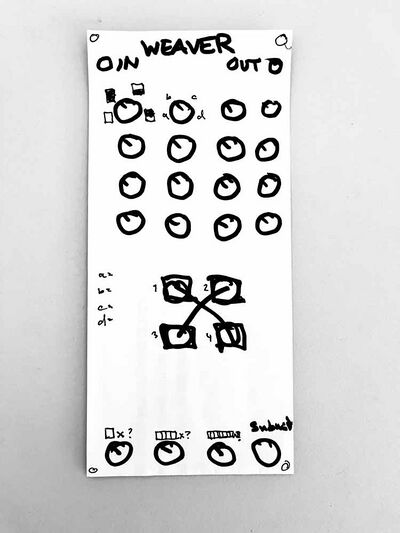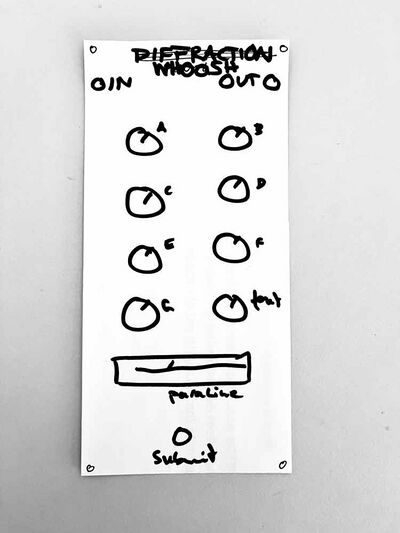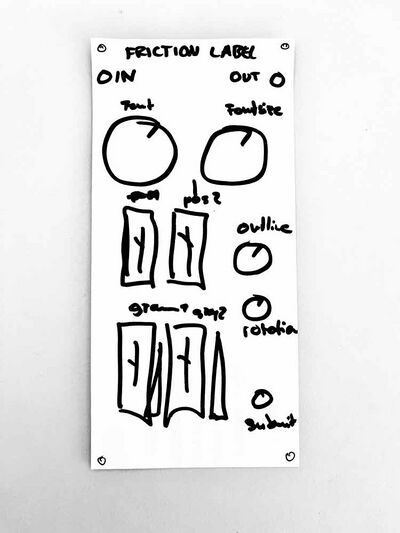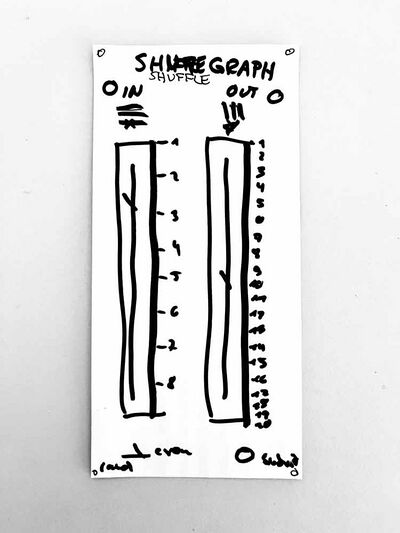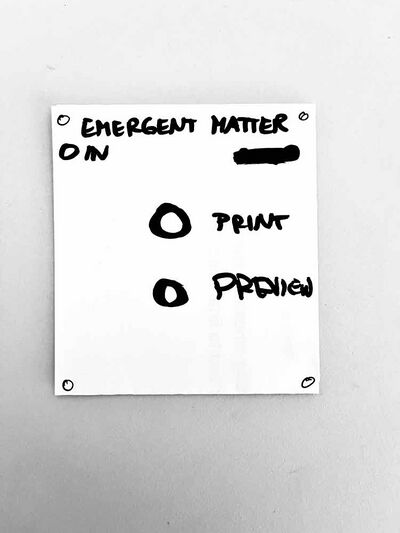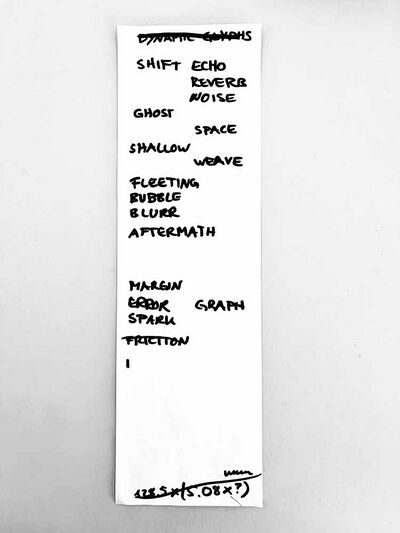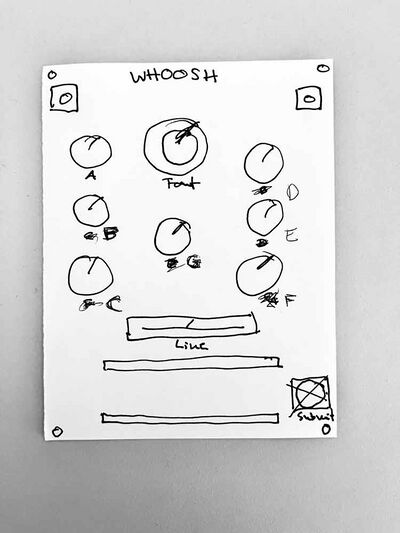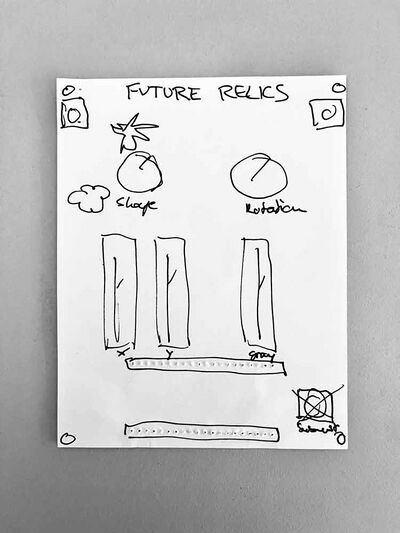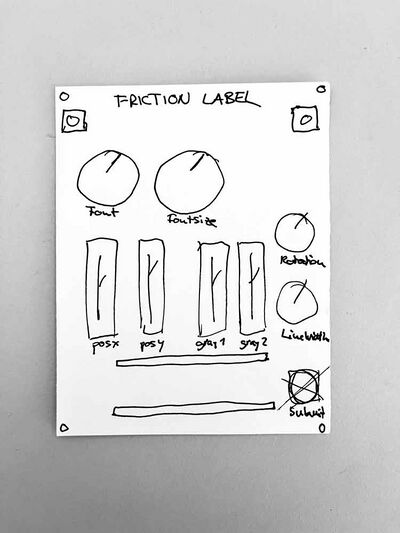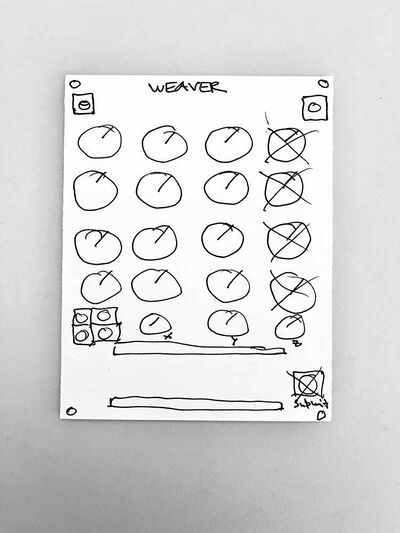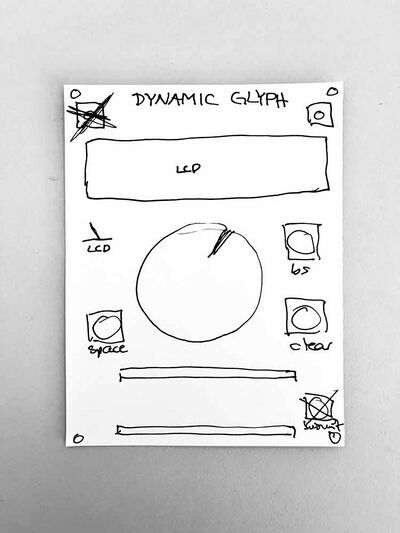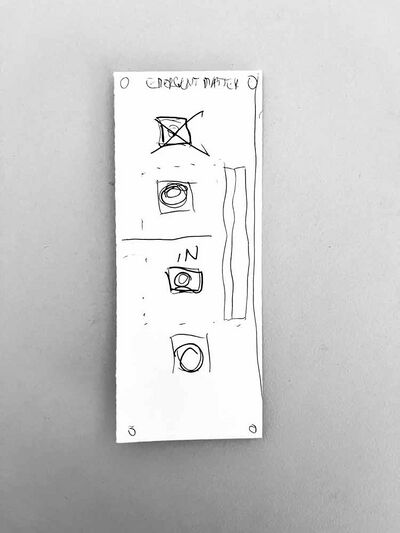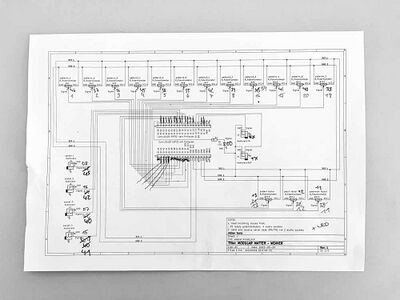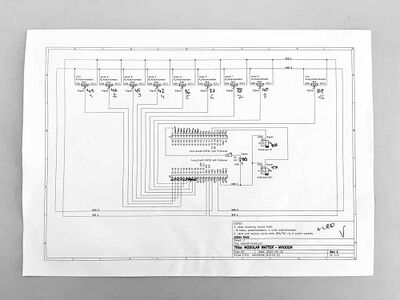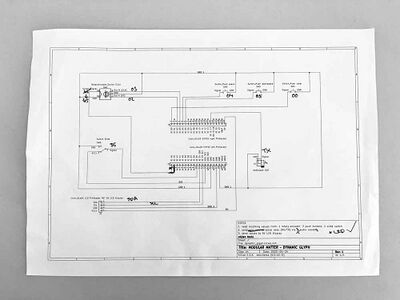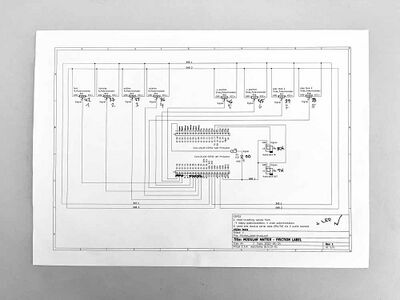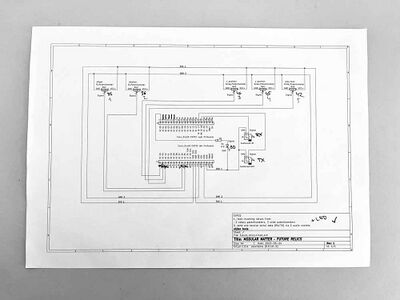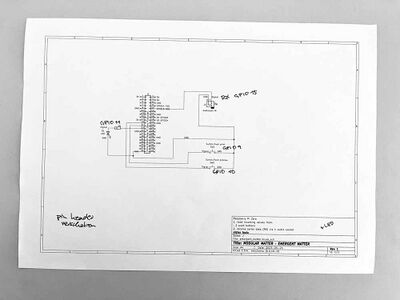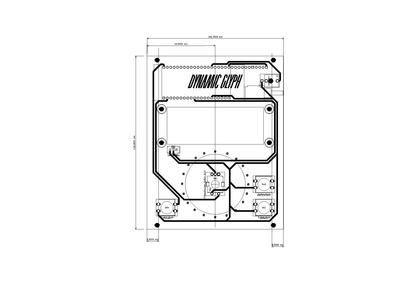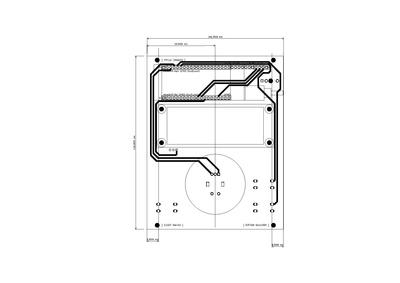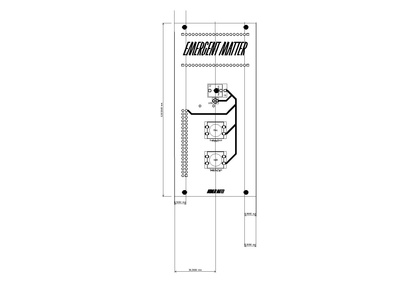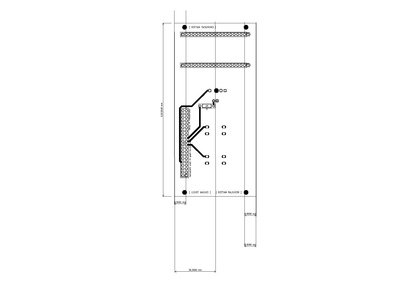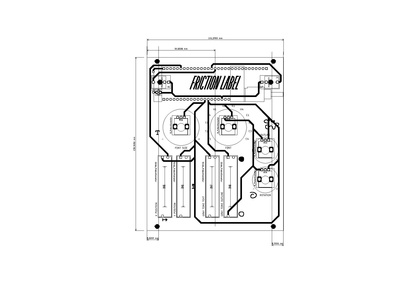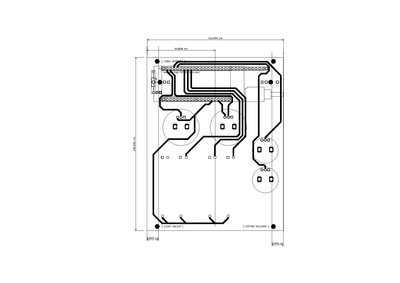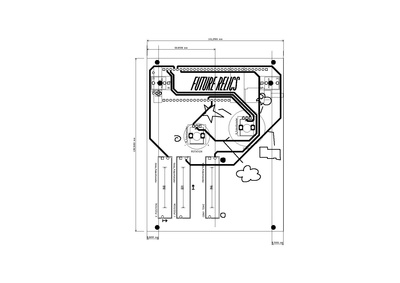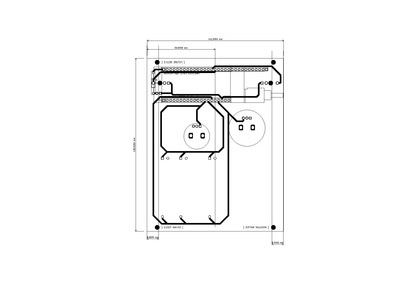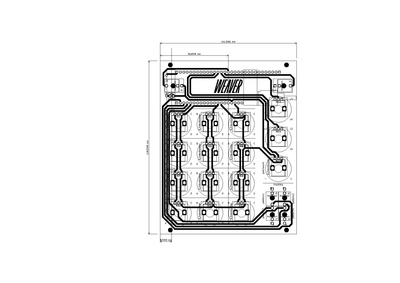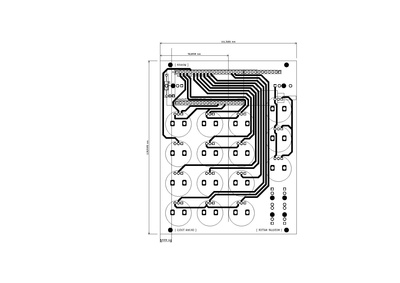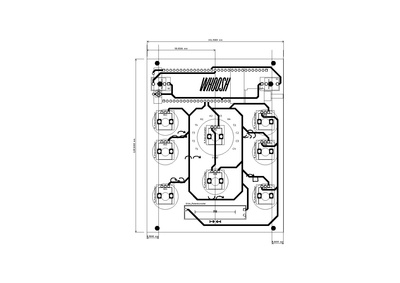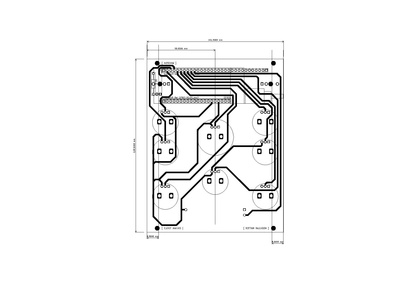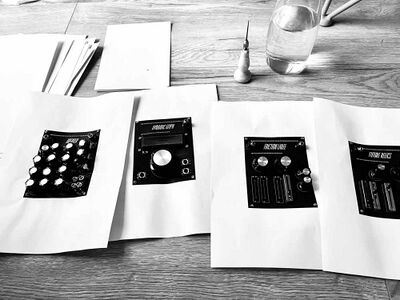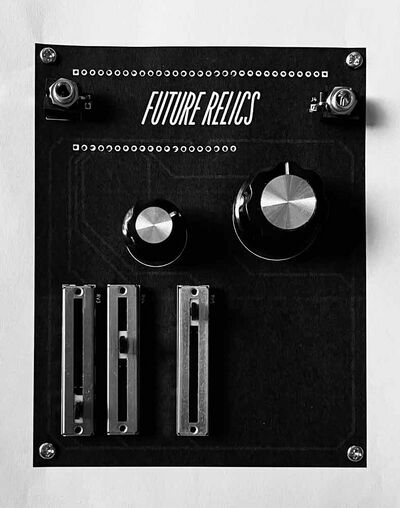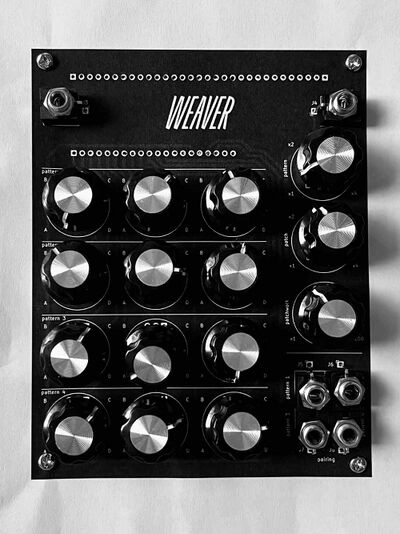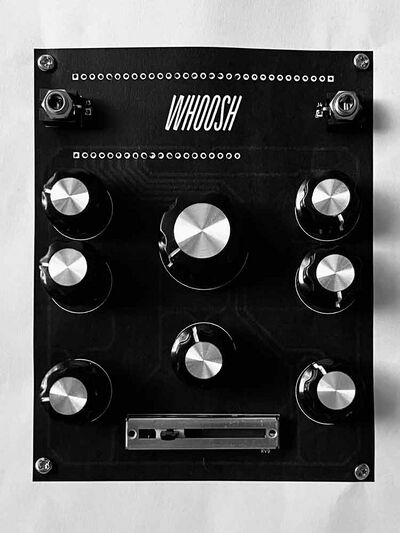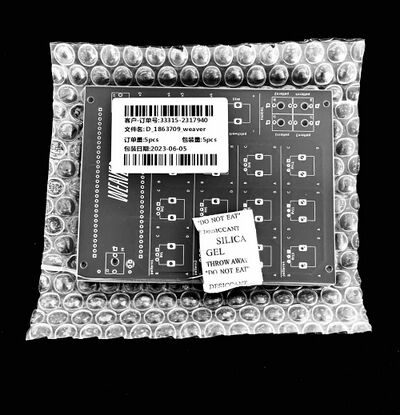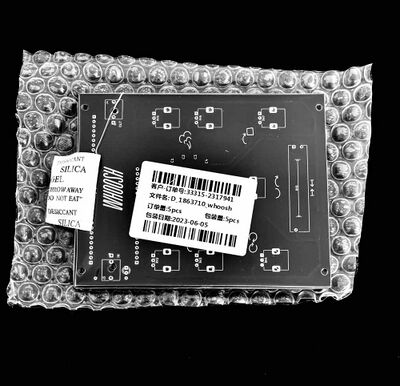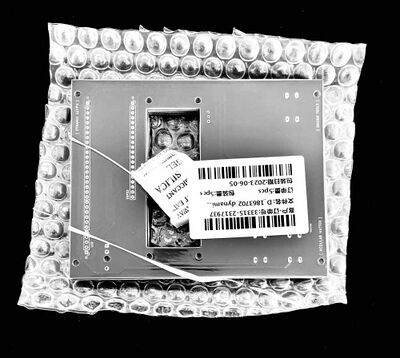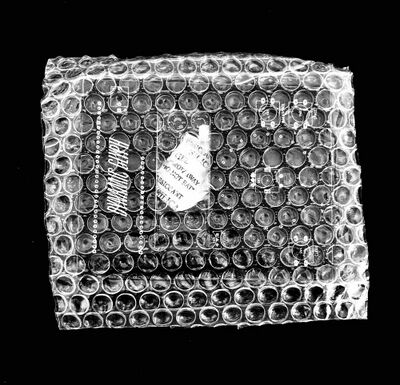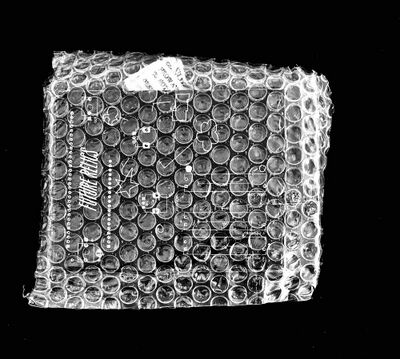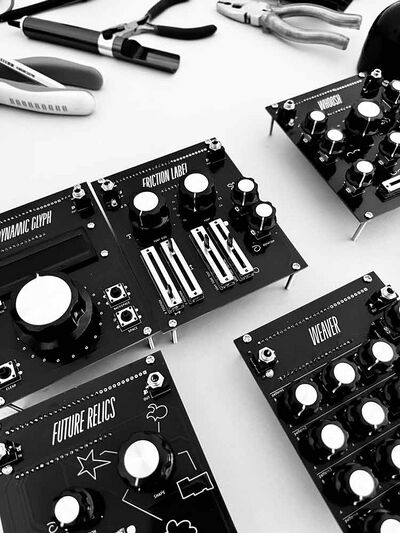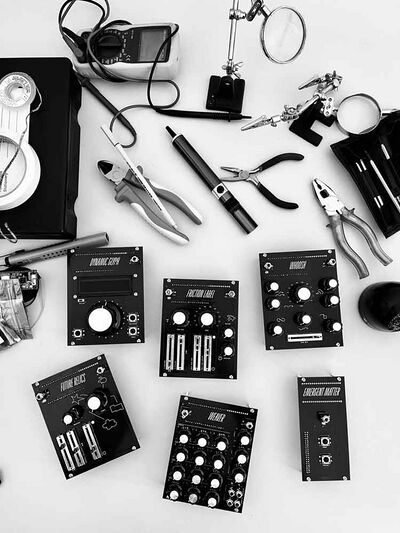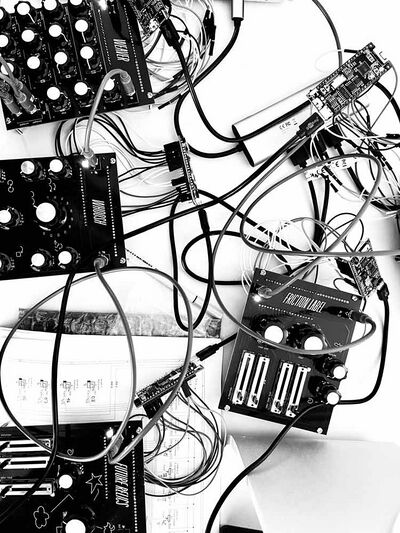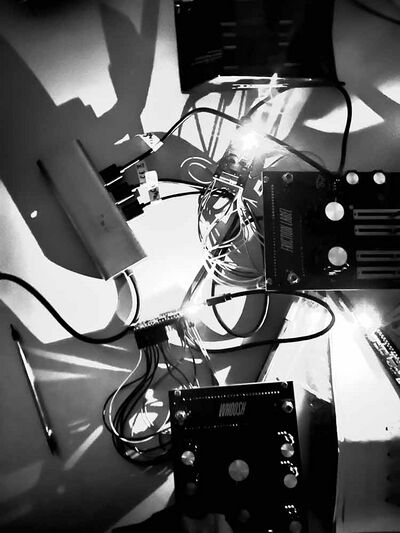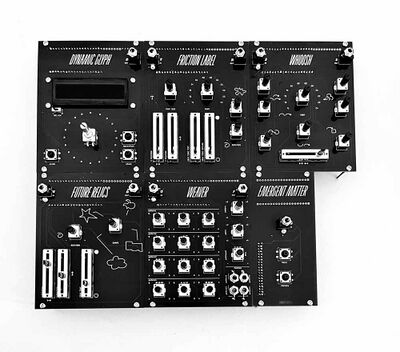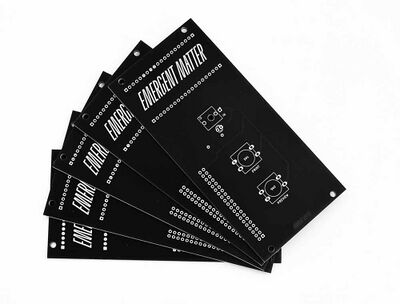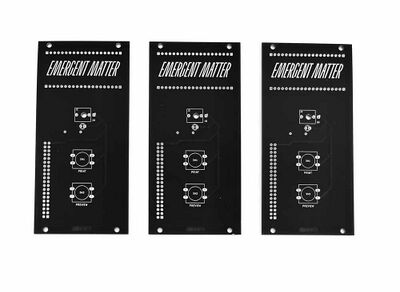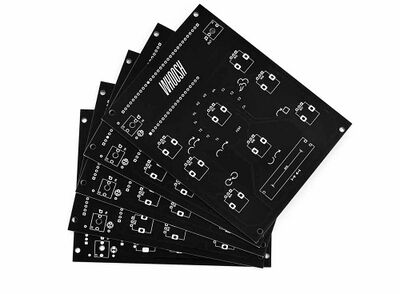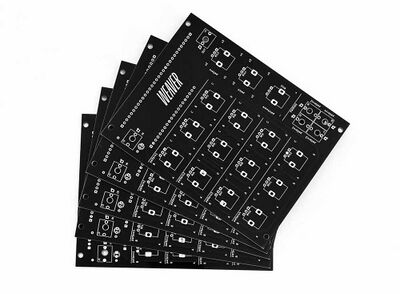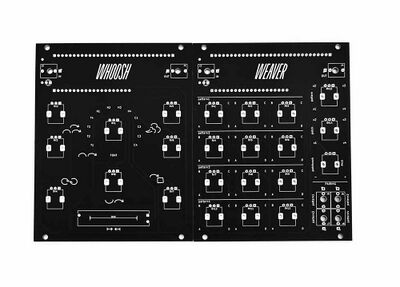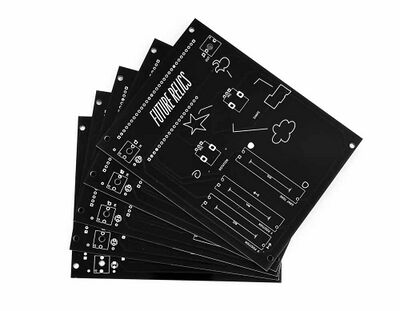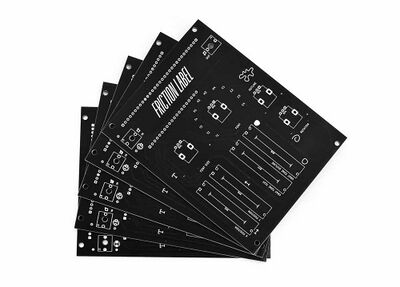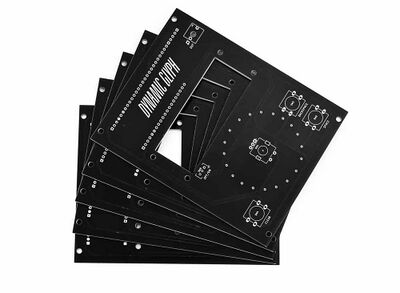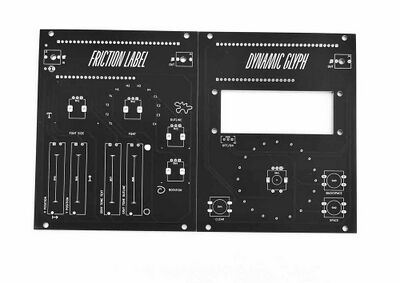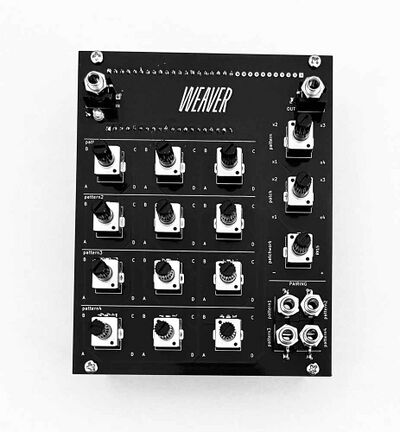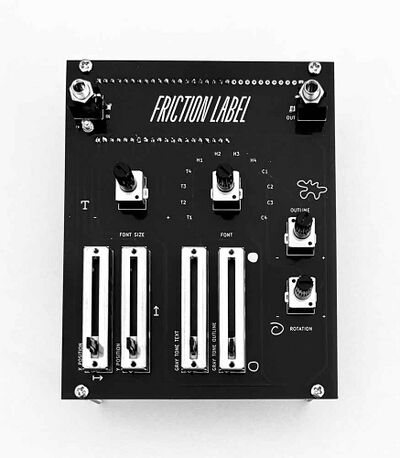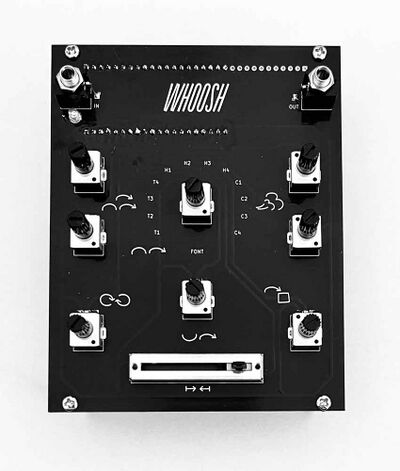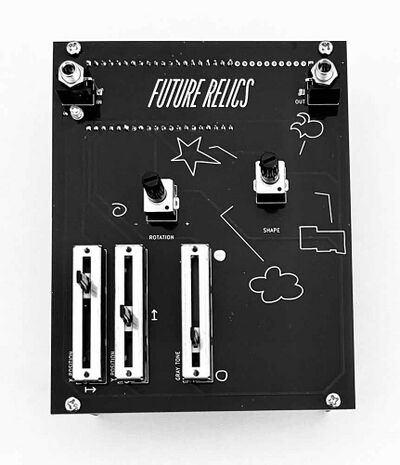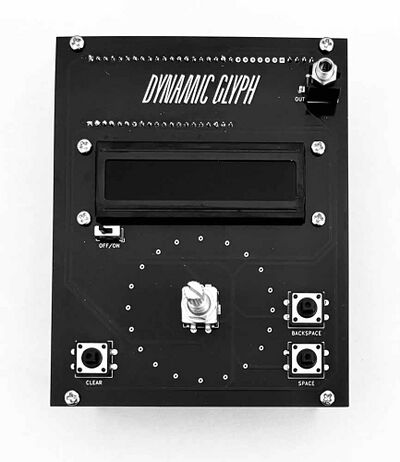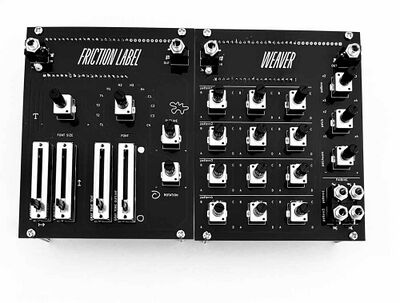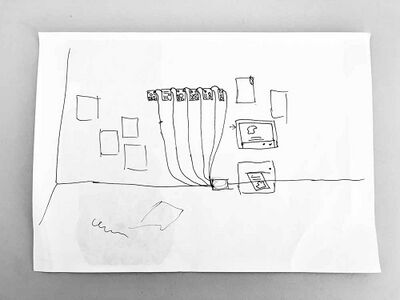User:Ohjian/Final presentation
MODULAR MATTER – REWIRE YOUR PRINTS!
[ Graduation project by ohjian - Jian Haake ]
previous practice, projects & prototypes
During my first year at XPUB I have been working on several projects and experiments that are linked or in some way related to my graduation project.
Workshop: The Screenless Office
In a workshop Brendan Howell introduced his project The Screenless Office. Collectively we developed a new function that was added to his Office: An operation that would use two texts as inputs, weave them together following a specific pattern and send it to the printer. Supi and I built a (screenless) physical interface with which the user could customize the pattern for the weaving function. We decided to use patchable cables as a physical representation of the weaving operation.
Analog Sound Synthesizers
A) Simple setup on a breadboard
This is the first analog synth I built. It consists of four variable oscillators that create different sounds and can be merged by two mixers. The setup also includes a DIY oscilloscope that uses an Arduino and an LCD display.
(Breadboard synth and oscilloscope)
B) Patchable / modular setup on a permanent breadboard
This is my first attempt of a patchable / modular synth. Two of the six oscillators can be connected to a mixer using patch cables.
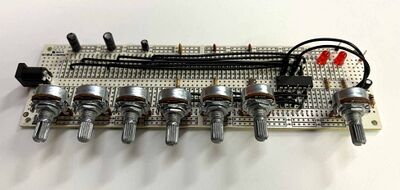
(Patchable synth)
Free Circuits
I experimented with some free circuit designs that would involve a simple interaction with the user to light an LED. My main interest was: How does the user experience change when you have to …
a) push a button
b) touch two points with your fingers and make your body part of the circuit
… to light the LED?
(Free touch circuits)
Book Generator
In the beginning of my XPUB studies I wrote a python function called Book Generator, which was based on the House of Dust by Alison Knowles. The function would run on a Raspberry Pi connected to a physical push button and a receipt printer. Every time the button was pushed, a new definition for the book would be printed. The Book Generator works as a research tool for anyone interested in reading, thinking and making (with) books.
Looking back, trying to connect the dots
sketching first ideas
project proposal
what?
For my graduation project I want to use the well-known concept of Modular Synthesis. Instead of working with sound, I want to translate the idea to the realm of print publishing. More precisely, I want to create physical modules that perform operations on text and images to create printed outcome.
Modular Synthesis
A modular synthesizer is an electronic instrument that generates electronic sounds. It consists of many different and independent modules that can be combined in any numbers of ways to create and manipulate the output. Each module performs a certain operation which can be controlled by adjustable components like switches, sliders and patch cables. The output of one module can be used as the input for another module. This allows for creative combinations, loops and unexpected outcome.
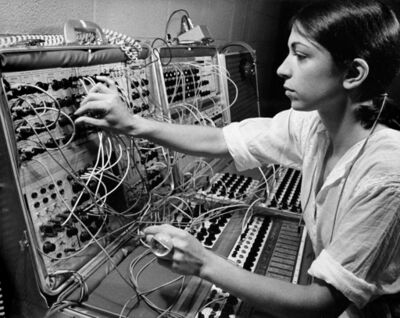
(Suzanne Channi and the Serge Modular Synthesizer)
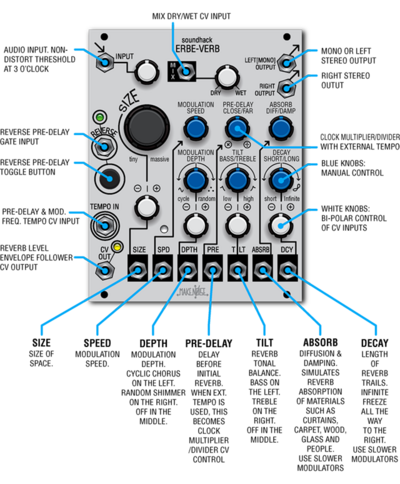
(Erbe-Verb module by Make Noise, Illustrated Manual)
Desktop Publishing (DTP)
Desktop Publishing is commonly used to create printed matter and combines several hardware and software components such as input devices (keyboard, camera), control devices (mouse, keyboard) and output devices such as a printer. The operation relies on a Graphical User Interface (GUI) and WYSIWYG software.
Re-thinking Desktop Publishing with the concept of Modular Synthesis
The process of Desktop Publishing could be transformed into a number of independent and combinable modules, each of them performing a specific operation with an operation-specific physical interface. Input modules that generate text or images and a preview module for accurate representation of the process could be accompanied by several transform modules to process and manipulate the input. The output module shall be a printer for typographical and pictorial outcome.
Audience
The project addresses graphic designers and other creatives who are used to work with traditional Desktop Publishing software and tools. By introducing my physical modules as an alternative approach I am hoping to break open those habits and make them reflect on the tools they are familiar with. Since the modules produce printed outcome on A4 paper they can be used to create small posters, flyers and even simple publications.
For the graduation show I envision an interactive installation where the modules can be used and tested and where conversations about tools could arise. In the future I am hoping to integrate the modules in the workshops that I regularly facilitate for graphic designers.
why?
As a trained graphic designer, mainly concerned with printed matter and book making, I have been familiar with Desktop Publishing for more than ten years. The big player Adobe has been very present in all my making, designing and publishing processes and I never really reflected on the influence it might have on my practice. XPUB introduced me to the idea and benefits of alternative tools and software and I started to look at Desktop Publishing software from a more critical angle.
Parallel to that I was introduced to physical computing and started to experiment with microcontrollers and analog electronic circuits. I became interested in modular synthesizers and started to build a few small prototypes. Even though sound has never been part of my creative making practice, I was clearly fascinated by the concept behind it.
In my graduation project I want to bring together these two interests by using the concept of Modular Synthesis and translating it to the context of print publishing. By creating my own modules I want to suggest alternative physical interfaces and create a different experience of human-machine-interaction.
In “Software Takes Command” Lev Manovich reflects on the impact that interfaces and tools have on contemporary aesthetics, visual languages and graphic design. As creatives we are so used to seemingly flawless devices that experimental or clunky modules may help to slow down the process and produce unexpected outcome. This new perspective could help to reveal, reflect and evaluate what is normally concealed:
- How (and to what extent) tools shape our practice.
- What impact tools have on our imagination and independence as creatives.
- How our practice changes when we create our own tools.
infrastructure
In the beginning stages of the project, the biggest challenge is to come up with a technical infrastructure. I want to make sure to create a system that works for both text and images. To enable the modular approach I have to research and test different languages, formats and hardware components that allow connection and communication between the modules.
first sketches
flowcharts
How to create a modular system for both hardware and software?
- independent modules that read values from a physical interface -> microcontrollers?
- output module(s) that generate a printable file and connect to a printer and preview screen -> Raspberry Pi?
breadboard prototypes
First simple prototypes, experiments and test runs to establish a modular system.
tryouts PCB (printed circuit boards)
How to get away from the breadboard? Building my first printed circuit boards (PCB) to understand how they work / how to build them.
- A simple 1-layer touch circuit built with Fritzing and CNC mill
- A simple module built with KiCad and produced by a manufacturer
test prints & previews
First experiments with postscript syntax to create printable files
midwives gift kit
Selected items for my midwives support group to give insight into the project and process. The letter reads:
Dear fellows,
I hope this small kit finds you well, despite the piling workload and lack of leisure time.
In this kit you will find some technical schematics, which try to document and visualize the tool I am working on. The material stems from a chapter in my thesis that functions as a technical manual for my tool. To help you imagine the hardware modules, you will find a few physical components that I am using a lot. The small prints in the kit are first test layouts, made with my modules.
When we meet, I would like to walk you through the material and invite you to annotate the schematics. In my thesis, I am implementing an annotation and it would be nice to find some inspiration for that.
Yours,
Jian
(+ notes I received from Kamo as contribution to my process)
modules: printed circuit boards
electronic components
first sketches
drafts
electronic circuits
PCB layouts
paper mockups
PCB unboxing
PCB assembly & setup
final modules
grad radio show
[ script for informercial ]
MODULAR MATTER – REWIRE YOUR PRINTS!
Are you tired of your usual Desktop Publishing setup and need to switch things up? Then this modular tool is for you! Combine the new hardware modules DYNAMIC GLYPH, FRICTION LABEL, WHOOSH, FUTURE RELICS, WEAVER and EMERGENT MATTER to create unexpected and exciting print results!
MODULAR MATTER – REWIRE YOUR PRINTS!
grad show
tools & components in use
(honest) list of (almost) all things that were used (or not) in the process of developing, planning, building, assembling, documenting and presenting the project
digital tools:
- Raspberry Pi Zero
- python 3
- ESP32
- C++
- terminal
- bash
- postscript
- ghostscript viewer
- KiCad
- Atom
- InDesign
- Photoshop
- Acrobat Pro
- Safari
- Preview
- Notes
- MacBook Pro
- iPhone
physical tools & materials:
- soldering iron
- solder
- sponge
- breadboards
- jumper wires
- wire cutter
- awl
- scredriver
electronic components for the tool itself:
- 1 Raspberry Pi Zero
- 6 ESP32 (LilyGO TTGO T8 ESP32-S2 - with SD Card Slot)
- 1 DFRobot I2C 16x2 Arduino LCD
- 30 10k rotary potentiometers
- 25 knobs small
- 4 knobs medium
- 1 knob large
- 8 10k slide potentiometers
- 5 push buttons
- 1 slide switches
- 1 rotary encoder
- 5 3mm LEDs
- 5 1k resistors
- 16 audio jacks
- 10 x 20 pinheaders
- 1 x 4 pinheader 90 degree
- 24 M3 bolts and nuts 30mm
- 4 M3 bolts and nuts 10mm
- 10 audio patch cables
- 6 power supplies
- 1 screen + HDMI cable + power supply
- 1 printer + USB cable + power supply
services & shops:
- Tinytronics
- Musicstore
- Wetronic
- Seeed Studio PCB manufacturer
- DHL

